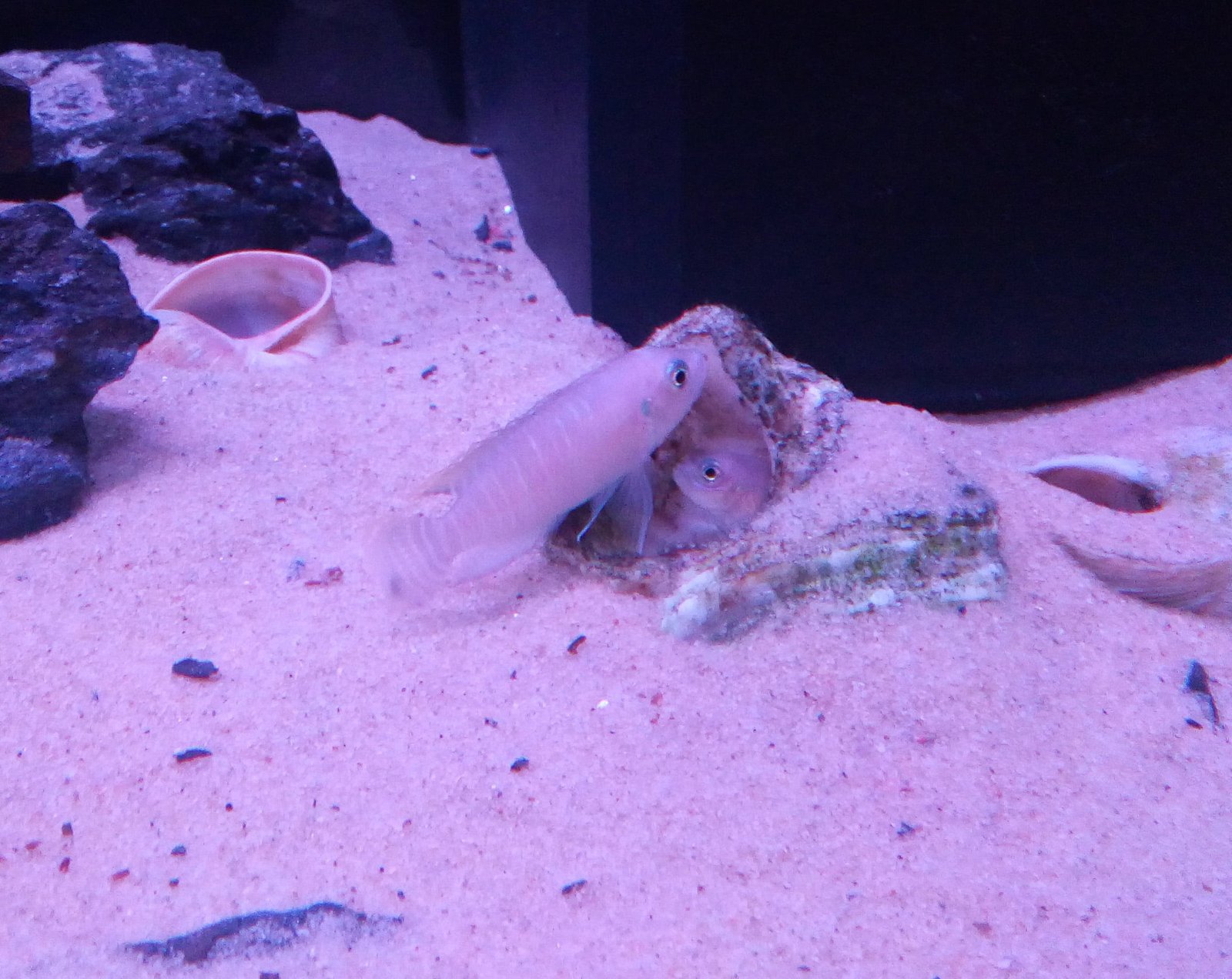Neolamprologus Brevis
Neolamprologus Brevis is an endemic species of Lake Tanganyika. It inhabits a little deeper water around the coast with a soft substrate, where there are empty snail shells. Unlike some other shell dwellers, such as Neolamprologus Multifasciatu or Similis, Brevise live in places where shells are not abundant.
Brevis in aquarium
Males reach a size of about 6 cm and females 4 cm. For one pair of these fish, it is necessary to provide an aquarium of about 40 liters, while for a colony, a much larger aquarium is necessary, at least about 100 liters. The aquarium should be arranged so that there is plenty of open space filled with fine sand and several empty snail houses per fish. Ideally, it would be the houses of the Neothauma snail, which is also a natural source of houses in the lake, especially if a biotope aquarium is being built, but the houses of the native vineyard snail are also acceptable for fish. The minimum depth of the sand should not be less than 6-7 cm because brevis like to dig and bury their houses.

Brevis are very territorial fish and will defend their small territories to the hilt. Due to their small size, care should be taken with which fish they can be combined with. It is best to combine them with other smaller species from the lake and with species that inhabit the middle and upper parts of the aquarium. Good species to combine with are Neolamprologus Brichardi or some smaller species of Julidochomis. Also, some inhabitants of open water such as Cyprichromis. If a large number of fish are kept together, they will form a colony. In that case, care should be taken to ensure that they have enough houses.

Breeding
Breeding these fish is quite simple. Mating and egg laying takes place in the snail’s house itself. Reproduction is possible in an aquarium community of several species, but if the goal is to keep as many young as possible, it is necessary to separate them into a separate aquarium. The setting should be such that plenty of empty shells are available to them because that’s where the female will lay her eggs. The water should be hard and alkaline with a ph. around 8.0-8.5 and a temperature between 25 and 27c. Ideally, you would have several females per male and the houses spaced apart so that each male can establish his own little territory. Fish food is the key when it comes to reproduction. Fish should be fed with a variety of food, primarily live and frozen, then also dry food. Females will try to attract the male’s attention by displaying their beauty at the entrance to their nest, which the male buries so that only the entrance remains visible on the sand. When she sees that the male is interested, she enters the house where she lays her eggs. When she finishes laying, she quickly comes out of the shells, and at that moment the male fertilizes the eggs.
After fertilization, the male no longer has a role in raising the young and is no longer welcome in the female’s territory. The female spends time at the entrance to the house, which ventilates the eggs and thus prevents the forming of mold. The eggs hatch in about 24 hours and the young begin to swim freely in about 6 to 7 days. Once they are free-swimming, they begin to move away from the shell in further exploration, until the female ejects them from the shell in about two weeks.
The fry is large enough when they swim through that they can feed on brine shrimp or micro worms. If we want the maximum number to survive, it is best to move them to a separate aquarium and feed them there. Although the parents will not touch them, the other inhabitants of the aquarium community certainly will.


0 Comments